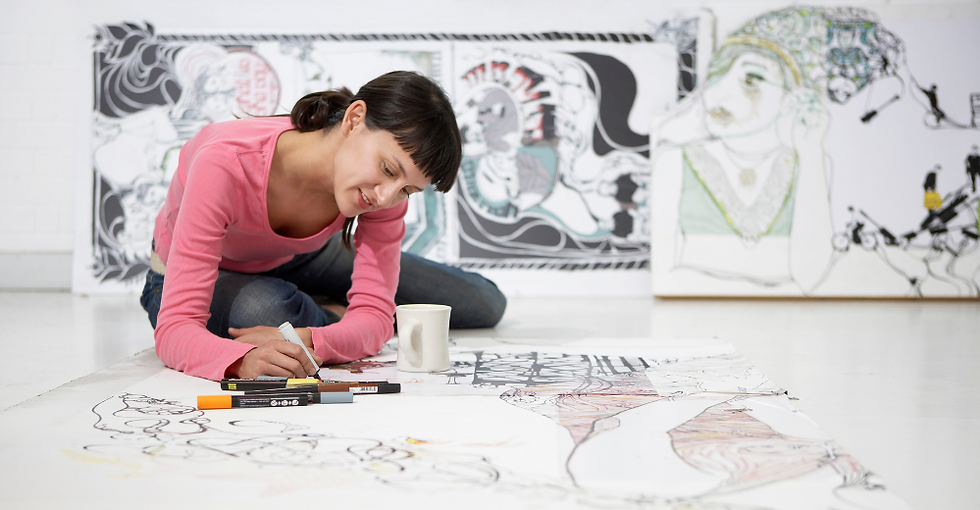Emotional Warriors: Body Tracing as a Way of Encountering and Transforming Our Self Image
- Lauren Fallat, LPC LPAT ATR-BC

- Sep 28, 2022
- 3 min read
by Lauren Fallat, LPC LPAT ATR-BC
Body image, according to the NEDA, the National Eating Disorders Association, is defined as “...how you see yourself when you look in the mirror or when you picture yourself in your mind”. Body image also encompasses our beliefs and feelings about our bodies, as well as how we physically experience our bodies through movement and action. When we explore the topic of body image from a therapeutic perspective, it is important for us to understand what our core beliefs and formalized images about our bodies are that we have created and held onto in our minds. When we begin to understand our thoughts and feelings about ourselves, we can then begin to meet ourselves with compassion and acceptance. We can begin to challenge whatever expectations, standards and critical measures we have held to compare ourselves to and ultimately judge our value.
There are a number of ways that one can explore the topic of body image in art therapy and one directed technique we will explore in today’s blog is called body tracing. This technique requires a large sheet of paper spanning the length and width of one’s body. Large rolls of butcher paper, white or brown or any color of your choosing, can be used; easel paper on large rolls can also be used. It is up to you with regard to the medium you will work with. This technique requires that you either lay down on the floor, on top of the paper, with your arms and legs positioned in a way that is comfortable for you and that portrays the type of body that you would like to portray. The paper can also be taped on a wall, so that instead of laying on the floor, you are then standing pressed against the paper on the wall. If one is laying down, you can attempt to outline yourself with a large crayon or pencil, but it is recommended that if you have someone trusted, such as an art therapist or loved one, that you invite them to help you during this part of the artmaking process.
Once you or a trusted assistant has completed the outline of your body, you can then determine how you would like to work with the outlined image. One directive in particular known as the Emotional Warrior, asks that you transform the outline of your body into a personified warrior or spiritual guide. Through this lens, one is asked to consider what one needs to protect their own emotional well-being- considering the type of superpowers, armor, body suits or costume needed and any other type of accessory that would be critical to protecting one’s self and values. The beauty of this directive is that the emotional warrior is not meant to look exactly like the person (although it absolutely could), but this freedom can be helpful in seeing the parts of us that can come alive when we refocus our energy away from judgment and criticism and embrace our strengths and creativity.
When exploring body image and sense of self, it can be helpful to ground ourselves in the moment and remember that the outline is one type of representation of the body and that it is a drawing. It is not meant to be a mirror reflection of who we are, but rather a way to experience and creatively encounter our physical selves through drawing, and painting. The goal is to leave judgment, criticism and self-deprecating statements aside. It is a skill to be able to acknowledge our internalized core beliefs about ourselves in relation to our bodies and begin to challenge those beliefs through self-compassion and self-acceptance. To embrace ourselves as truly unique, worthy and unconditionally valuable is a transgressive act in a world where we are given messages of being ‘too much’ or ‘not good enough’ in comparison to a perfectionistic and skewed ideal.
To Schedule an appointment, click on the Book an Appointment button.
To learn more about Holistic Health Counseling Center, please visit out website at www.hhccnj.com




Comments